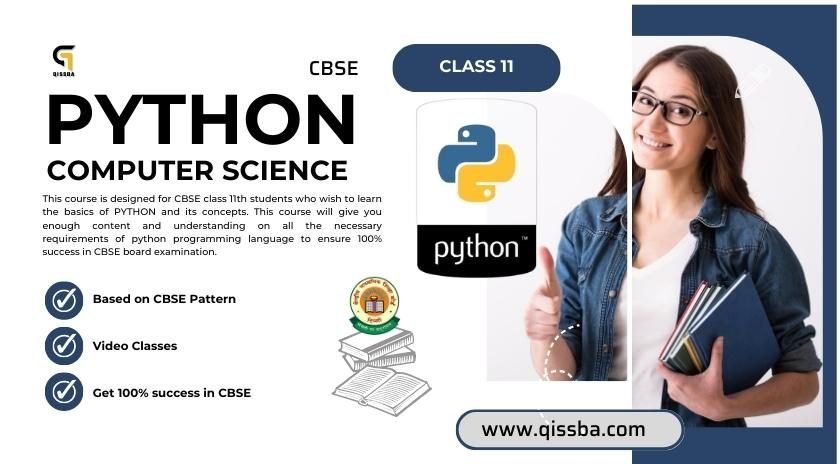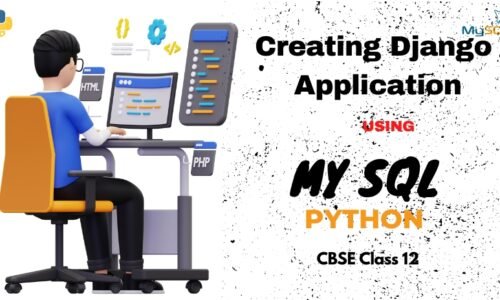COURSE DESCRIPTION
Computer Science with Python course is designed by our expert Mohammad Amees.
Computer Science with Python course fulfill all requirements of your CBSE curriculum for Computer Science subject of class 12.
The aim of Computer Science with Python course is to get 100% success in you board examination.
Computer Science with Python course contains all required concepts with video description of python as given for CBSE class 12.
Computer Science with Python course includes notes, videos, question answers, Programs, and one sample paper solution.
AUDIENCE
This tutorial is designed for CBSE class 12th students who wish to learn the basics of PYTHON and its concepts. This tutorial will give you enough content and understanding on all the necessary requirements of python programming language to ensure 100% success in CBSE board examination.
PREREQUISITES
Before proceeding with this tutorial, you should have a basic understanding of computer working As we need to have basic functional skill of computer it will be good if you have some understanding of other web technologies such as HTML, CSS etc.
LEARNING OUTCOMES
- More than 10 video lectures and 6 hours of content!
- Learn Software Testing and Automation basics from a professional trainer from your own desk.
- Practical training starting from basics to advanced testing programming.
- Best suitable for cbse class 12th level students and faster way to complete preparation of one section of syllabus (40 Marks).
- Course content designed by considering technology and the job market.
- Practical assignments at the end of every session.
Course Features
- Lectures 72
- Quiz 0
- Duration 7 weeks
- Skill level Beginner
- Language English
- Students 206
- Assessments Yes
- 9 Sections
- 72 Lessons
- 7 Weeks
- Python : Welcom to Python - Let's Start4
- Python : Python Fundamentals13
- 3.1Introduction – Fundamentals
- 3.2Python Character set
- 3.3Tokens in Python
- 3.4Tokens – Keywords
- 3.5Tokens – Identifiers
- 3.6Tokens – Literals
- 3.7Tokens – Operators
- 3.8Tokens – Punctuations
- 3.9Componants of a python program
- 3.10Creating a variable
- 3.11Multiple Assignments
- 3.12Dynamic Typing
- 3.13Simple Input and Output
- Python : Data Handling12
- 4.1Introduction – Data Handling
- 4.2Data Types : Numbers
- 4.3Data Types : Strings
- 4.4Data Types : Lists and Tuples
- 4.5Data Types : Dictionary
- 4.6Mutable and immutables data types
- 4.7Operators : Arithmetic operators
- 4.8Operators : Relational operators
- 4.9Operators : Identity operators
- 4.10Operators : Logical operators
- 4.11Operators : Bitwise operators
- 4.12Operators : Operators Precedence
- Python : Conditional and Iterative Statements13
- 5.1Introduction – Conditions
- 5.2Types of Statements in Python
- 5.3Statement Flow Control
- 5.4Program Logic Development – Flowcharts
- 5.5The if statement
- 5.6The if – else Statement
- 5.7The if – elif Statement
- 5.8The nested if Statement
- 5.9The range() Function
- 5.10Looping : The for loop
- 5.11Looping : The while Loop
- 5.12Looping : Nested Loops
- 5.13Jump statement – Break and Continue
- Python : String Manipulation7
- Python : List Menipulation6
- Python : Tuples5
- Python : Dictionaries9
- 9.1Introduction – Key : value pair
- 9.2Creating a Dictionary
- 9.3Accessing Elements of a Dictionary
- 9.4Characterstics of a Dictionary
- 9.5Working : Multiple Ways of Creating Dictionary
- 9.6Working : Accessing Elements of a Dictionary
- 9.7Working : Updating existing elements of a Dictionary
- 9.8Working : Deleting elements from a Dictionary
- 9.9Dictionary Functions and Methods
- Learn Sorting3







